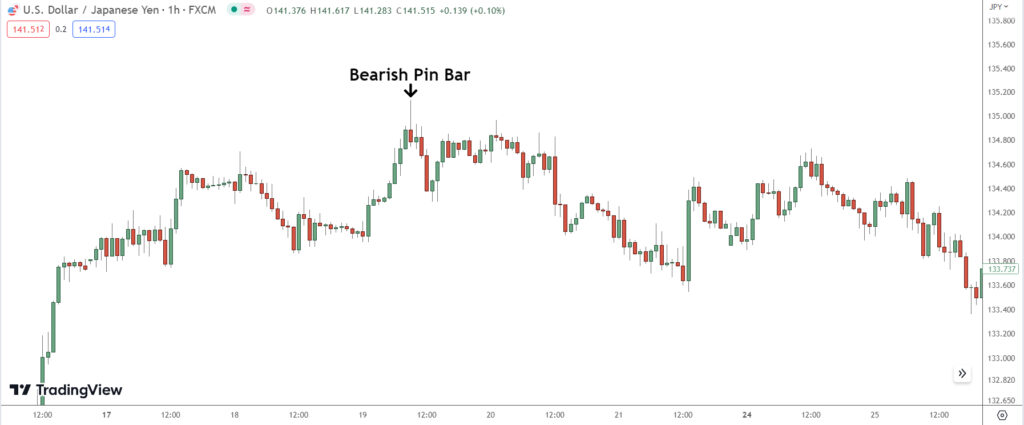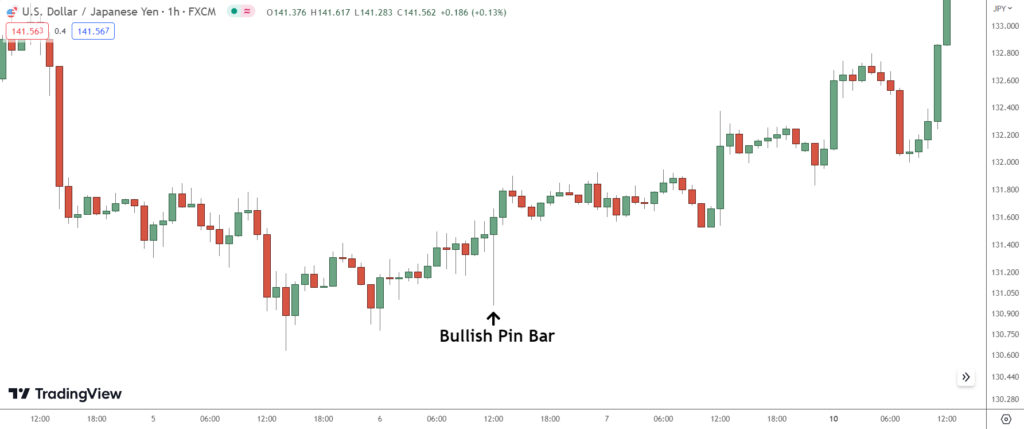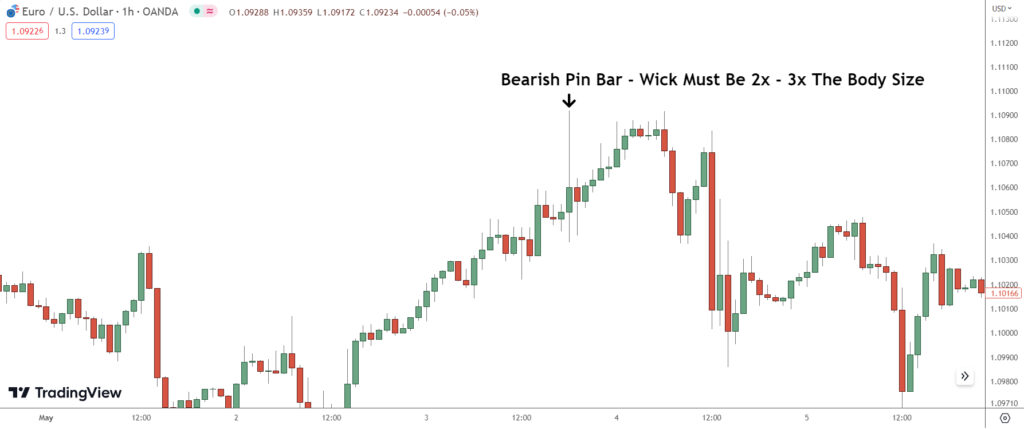Pin bars are characterized by a small body – this represents the area between the opening and closing prices – and a long upper or lower shadow, also referred to as a ‘wick’ or ‘tail’, which is at least twice the length of the body.
This wick is what gives the pin bar its ‘pin-like’ appearance.

When you’re scanning your chart, you’re looking for a candlestick with these characteristics. If the long wick is above the body, you’ve got yourself an bearish pin bar.

If the wick is below the body, that’s a classic pin bar.
But there’s more to it than just spotting the shape.
You need to consider the pin bar’s location in relation to the overall price action. Ideally, a pin bar should appear at a significant swing high or swing low, or at a key support or resistance level.
The location adds to the strength of the pin bar signal.
Keep in mind: Not all pin bars are created equal.

The best pin bars, the ones you really want to pay attention to, are the ones that stick out from all the other bars on the chart. If a pin bar’s wick extends beyond the surrounding bars, that’s a clear sign of a strong reversal signal.
As with all things in trading, practice makes perfect.
The more you familiarize yourself with the appearance and characteristics of pin bars, the quicker you’ll be at identifying them on your charts.